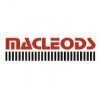Quality Control Analyst
100+ Quality Control Analyst Interview Questions and Answers

Asked in Ipca Laboratories

Q. The Principle of UV-Visible Spectroscopy is based on the absorption of ultraviolet light or visible light by chemical compounds, which results in the production of distinct spectra. Spectroscopy is based on the...
read moreUV-Visible Spectroscopy is based on the interaction between light and matter resulting in the production of distinct spectra.
UV-Visible Spectroscopy is a non-destructive technique used to determine the concentration of a sample.
It is widely used in the pharmaceutical industry to analyze drug compounds.
The spectra produced can be used to identify unknown compounds and monitor chemical reactions.
UV-Visible Spectroscopy is also used in environmental analysis to measure pollutant...read more

Asked in Dhandhania Infotech

Q. What is operating system, how many types to connect desktop to internet
An operating system is a software that manages computer hardware and software resources. There are several ways to connect desktop to internet.
Operating system is the backbone of a computer system.
It manages computer hardware and software resources.
Examples of operating systems are Windows, macOS, Linux, etc.
To connect a desktop to the internet, one can use Ethernet cable, Wi-Fi, or cellular network.
Ethernet cable provides a wired connection, Wi-Fi provides a wireless connect...read more
Quality Control Analyst Interview Questions and Answers for Freshers
Asked in Pellsys Pharma

Q. How do you check absorbance using a UV visible spectrophotometer?
To check absorbance in a UV visible spectrophotometer, prepare a sample, set the wavelength, adjust the blank, and measure the absorbance.
Prepare a sample by diluting or extracting the substance of interest.
Set the wavelength on the spectrophotometer to the desired value.
Adjust the blank by measuring the absorbance of a solvent or reagent without the substance.
Measure the absorbance of the sample by placing it in the spectrophotometer and recording the reading.
Repeat the proc...read more

Asked in Annora Pharma

Q. What is tablet, tablet desintigration time
Tablet is a solid dosage form of medication. Tablet disintegration time is the time taken for a tablet to break down into smaller particles.
Tablets are made by compressing a mixture of active ingredients and excipients.
Disintegration time is important for drug absorption and efficacy.
Factors affecting disintegration time include tablet composition, size, and shape.
Disintegration time can be measured using various methods such as USP apparatus or disintegration testers.
Example...read more

Asked in Annora Pharma

Q. What is HPLC and what are its different parts and their uses?
HPLC is a high-performance liquid chromatography used for separating, identifying, and quantifying components in a mixture.
HPLC consists of a pump, injector, column, detector, and data system.
The pump is used to deliver the mobile phase at a constant flow rate.
The injector is used to introduce the sample into the mobile phase.
The column is where the separation of components occurs.
The detector is used to detect the separated components and generate a signal.
The data system is...read more

Asked in Laurus Labs

Q. What are the different types of chromatography and their principles?
Chromatography is a technique used to separate and analyze mixtures based on their different interactions with a stationary phase and a mobile phase.
Types of chromatography include gas chromatography, liquid chromatography, ion exchange chromatography, affinity chromatography, and size exclusion chromatography.
Gas chromatography separates compounds based on their volatility and interaction with a stationary phase inside a column.
Liquid chromatography separates compounds based...read more
Quality Control Analyst Jobs




Asked in Lupin

Q. What is the principle of HPLC?
HPLC stands for High Performance Liquid Chromatography. It is a technique used to separate, identify, and quantify components in a mixture.
HPLC uses a stationary phase and a mobile phase to separate components based on their chemical properties.
The stationary phase is typically a solid or liquid packed into a column, while the mobile phase is a liquid that flows through the column.
Components in the mixture interact differently with the stationary and mobile phases, causing th...read more

Asked in Amazon Development Centre India

Q. What raw materials are used to produce activated carbon?
Raw materials used to produce activated carbon include coconut shells, wood, coal, and peat.
Coconut shells
Wood
Coal
Peat
Share interview questions and help millions of jobseekers 🌟


Asked in Laurus Labs

Q. What are the different types of spectroscopy and their applications?
Spectroscopy is the study of the interaction between matter and electromagnetic radiation. Different types include UV-Vis, IR, NMR, and MS.
UV-Visible Spectroscopy: Used for analyzing the electronic transitions in molecules, determining concentration of a substance, and identifying unknown compounds.
Infrared Spectroscopy: Used for identifying functional groups in organic molecules, determining molecular structure, and analyzing chemical bonds.
Nuclear Magnetic Resonance (NMR) S...read more
Asked in Pellsys Pharma

Q. How do you check absorbance using HPLC?
Absorbance with HPLC can be checked by measuring the amount of light absorbed by a sample at a specific wavelength.
Prepare a sample solution and inject it into the HPLC system.
Set the wavelength of the detector to the desired value.
Record the baseline absorbance of the mobile phase.
Inject the sample and measure the absorbance of the eluting peaks.
Compare the absorbance values with known standards or specifications.
Ensure the system is properly calibrated and validated for acc...read more

Asked in Macleods Pharmaceuticals

Q. 1) What is chromatography? 2) What is spectroscopy? 3) What is molarity?
Chromatography is a technique used to separate and analyze mixtures. Spectroscopy is the study of the interaction between matter and electromagnetic radiation. Molarity is a measure of the concentration of a solution.
Chromatography involves passing a mixture through a stationary phase and a mobile phase to separate its components.
Spectroscopy can be used to identify the chemical composition of a substance by analyzing the way it interacts with different wavelengths of light.
M...read more

Asked in Lupin

Q. What is Lambert-Beer's Law?
Lambert Beer's law relates the concentration of a solution to the amount of light absorbed by the solution.
The law states that the absorbance of a solution is directly proportional to its concentration and the path length of the light through the solution.
It is commonly used in spectrophotometry to determine the concentration of a substance in a solution.
The law assumes that the solution is homogeneous, the absorbing species is in a single form, and the incident light is mono...read more

Asked in Lupin

Q. What is a pH meter? Explain its range.
A pH meter is a scientific instrument used to measure the acidity or alkalinity of a substance.
Measures the concentration of hydrogen ions in a solution
Range typically from 0 to 14, with 7 being neutral
Used in various industries such as food and beverage, pharmaceuticals, and environmental monitoring

Asked in Laurus Labs

Q. What is a brief introduction to chemistry?
Chemistry is the study of matter, its properties, composition, and interactions.
Chemistry is a branch of science that deals with the composition, structure, properties, and reactions of matter.
It involves understanding the behavior of atoms and molecules, and how they interact to form new substances.
Chemistry is essential in various industries such as pharmaceuticals, agriculture, and manufacturing.
Examples include studying the properties of elements on the periodic table, an...read more

Asked in Amazon Development Centre India

Q. What do you know about activated carbon?
Activated carbon is a form of carbon processed to have small, low-volume pores that increase the surface area available for adsorption or chemical reactions.
Activated carbon is commonly used in water purification, air filters, and gas masks.
It is known for its ability to adsorb a wide range of impurities and contaminants.
Activated carbon is produced by heating carbonaceous materials, such as coconut shells or wood, at high temperatures in the absence of oxygen.
The activation ...read more

Asked in Wexford Laboratories

Q. Can you explain what different equipment is used in the manufacture of a tablet?
Various equipment is essential for tablet manufacturing, ensuring quality, consistency, and efficiency in production.
Granulator: Used for size reduction and granulation of powders, e.g., high-shear granulators.
Tablet Press: Compresses granules into tablets, e.g., rotary tablet presses.
Coater: Applies coatings to tablets for protection and controlled release, e.g., fluid bed coaters.
Dryer: Removes moisture from granules or tablets, e.g., tray dryers or fluid bed dryers.
Mixer: ...read more

Asked in Laurus Labs

Q. Draw the Structure of Toluene ,methanol , Ethanol and Ethylene glycol
Structures of toluene, methanol, ethanol, and ethylene glycol.
Toluene has a benzene ring with a methyl group attached.
Methanol has a single carbon atom with a hydroxyl group attached.
Ethanol has two carbon atoms with a hydroxyl group attached to one of them.
Ethylene glycol has two carbon atoms with two hydroxyl groups attached.

Asked in Dhandhania Infotech

Q. Explain the remote desktop process.
Remote desktop process allows users to access and control a computer from a remote location.
Remote desktop process enables users to connect to a computer remotely and control it as if they were physically present.
It involves using a client software on the local computer to establish a connection with the remote computer.
The remote computer must have the necessary server software installed and configured to accept remote connections.
Once connected, the user can view the remote...read more

Asked in Macleods Pharmaceuticals

Q. What is the number of gram equivalents of solute dissolved in one liter of solution?
The number of grams of solute dissolved in one liter of solution is known as the concentration of the solution.
Concentration is typically expressed in units such as grams per liter (g/L) or molarity (mol/L).
To calculate concentration, divide the mass of the solute by the volume of the solution.
For example, if 10 grams of salt are dissolved in 1 liter of water, the concentration of the solution is 10 g/L.

Asked in Intertek

Q. Instrument of GC Ms and UV spectroscopy trouble shooting
For GC Ms, check for leaks, column contamination, and detector issues. For UV spectroscopy, check for lamp and cell issues.
For GC Ms, check for leaks in the system and ensure that the column is not contaminated. Also, check for detector issues such as a dirty or faulty detector.
For UV spectroscopy, check for lamp issues such as a burnt-out lamp or incorrect wavelength settings. Also, check for cell issues such as air bubbles or scratches on the cell.
Regular maintenance and ca...read more

Asked in Lupin

Q. What is the principle of GC?
GC stands for Gas Chromatography. Its principle is based on the separation of components of a mixture based on their partitioning between a stationary phase and a mobile phase.
GC separates components of a mixture based on their partitioning between a stationary phase and a mobile phase
It involves injecting a sample into a heated inlet, vaporizing it and then separating the components using a column
The separated components are then detected and analyzed based on their retentio...read more

Asked in Biological E

Q. What is your current job role? Types of components in HPLC.. Detectors type in HPLC.
I am currently working as a Quality Control Analyst in a pharmaceutical company.
Types of components in HPLC include stationary phase, mobile phase, column, injector, detector, and data system.
Detectors commonly used in HPLC are UV-Vis detector, fluorescence detector, refractive index detector, and mass spectrometry detector.

Asked in Wexford Laboratories

Q. What is analytical method of validation, what are types
Analytical method validation ensures reliability and accuracy of testing methods in laboratories.
Purpose: To confirm that an analytical method is suitable for its intended use.
Types: Specificity, Accuracy, Precision, Detection Limit, Quantitation Limit.
Example of Specificity: A method that distinguishes between similar compounds in a sample.
Example of Accuracy: A method that provides results close to the true value.
Example of Precision: A method that yields consistent results...read more


Q. What are S1, S2, and S3 in dissolution testing?
S1, S2, and S3 in dissolution refer to the stages of dissolution testing in pharmaceutical analysis.
S1 is the stage where the tablet starts to disintegrate into smaller particles.
S2 is the stage where the drug starts to dissolve into the surrounding medium.
S3 is the stage where the drug is completely dissolved and available for absorption.
These stages are important in determining the release rate of the drug from the dosage form.
Asked in Pellsys Pharma

Q. How do you analyze dissolution?
Dissolution analysis involves studying the rate at which a substance dissolves in a solvent.
Dissolution analysis is performed to determine the dissolution rate of a substance.
It involves measuring the amount of substance dissolved over time.
Various techniques like UV spectroscopy, HPLC, or dissolution testers can be used for analysis.
Factors like temperature, pH, and agitation speed can affect dissolution rates.
Results are compared against predetermined specifications to ensu...read more

Asked in Sun Pharmaceutical Industries

Q. The number of grams equivalent to solute that is dissolved in one litre solution
Molarity is the number of grams of solute dissolved in one liter of solution.
Molarity is a unit of concentration in chemistry
It is calculated by dividing the number of moles of solute by the volume of the solution in liters
For example, if 0.5 moles of NaCl are dissolved in 1 liter of water, the molarity would be 0.5 M


Q. What does Q stand for in Dissolution testing?
Q stands for Quantity in Dissolution.
Q stands for Quantity in Dissolution testing.
It refers to the amount of drug substance that is dissolved in a specified time period.
It is an important parameter in assessing the quality and performance of a drug product.
Q can also stand for Quality in some contexts, but in Dissolution it specifically refers to Quantity.

Asked in SMS Pharmaceuticals

Q. What is Molecular weight of sulphuric acid ?
The molecular weight of sulfuric acid is 98.08 g/mol.
The molecular formula of sulfuric acid is H2SO4.
To calculate the molecular weight, add the atomic weights of each element in the formula (2*1.01 for hydrogen, 32.06 for sulfur, 4*16.00 for oxygen).
Molecular weight of sulfuric acid = 2*1.01 + 32.06 + 4*16.00 = 98.08 g/mol.


Q. What's Normality, Molarity and Molality?
Normality, Molarity, and Molality are different units of concentration used in chemistry.
Normality is the number of equivalents of a substance dissolved in a liter of solution.
Molarity is the number of moles of solute per liter of solution.
Molality is the number of moles of solute per kilogram of solvent.
Normality is used in acid-base reactions, while Molarity and Molality are more commonly used in general chemistry.
Example: A 1M solution of NaCl has 1 mole of NaCl dissolved ...read more

Asked in Laurus Labs

Q. What is an assay in drug substance?
Assay in drug substance is a test used to determine the potency or concentration of a drug in a sample.
Assay is a quantitative analysis method used to measure the amount of a specific substance in a sample.
It is commonly used in pharmaceutical industry to ensure the quality and consistency of drug products.
Assay results are compared to a standard reference to determine the potency or concentration of the drug.
Examples of assays include HPLC (High Performance Liquid Chromatogr...read more
Interview Questions of Similar Designations
Interview Experiences of Popular Companies








Reviews
Interviews
Salaries
Users

















